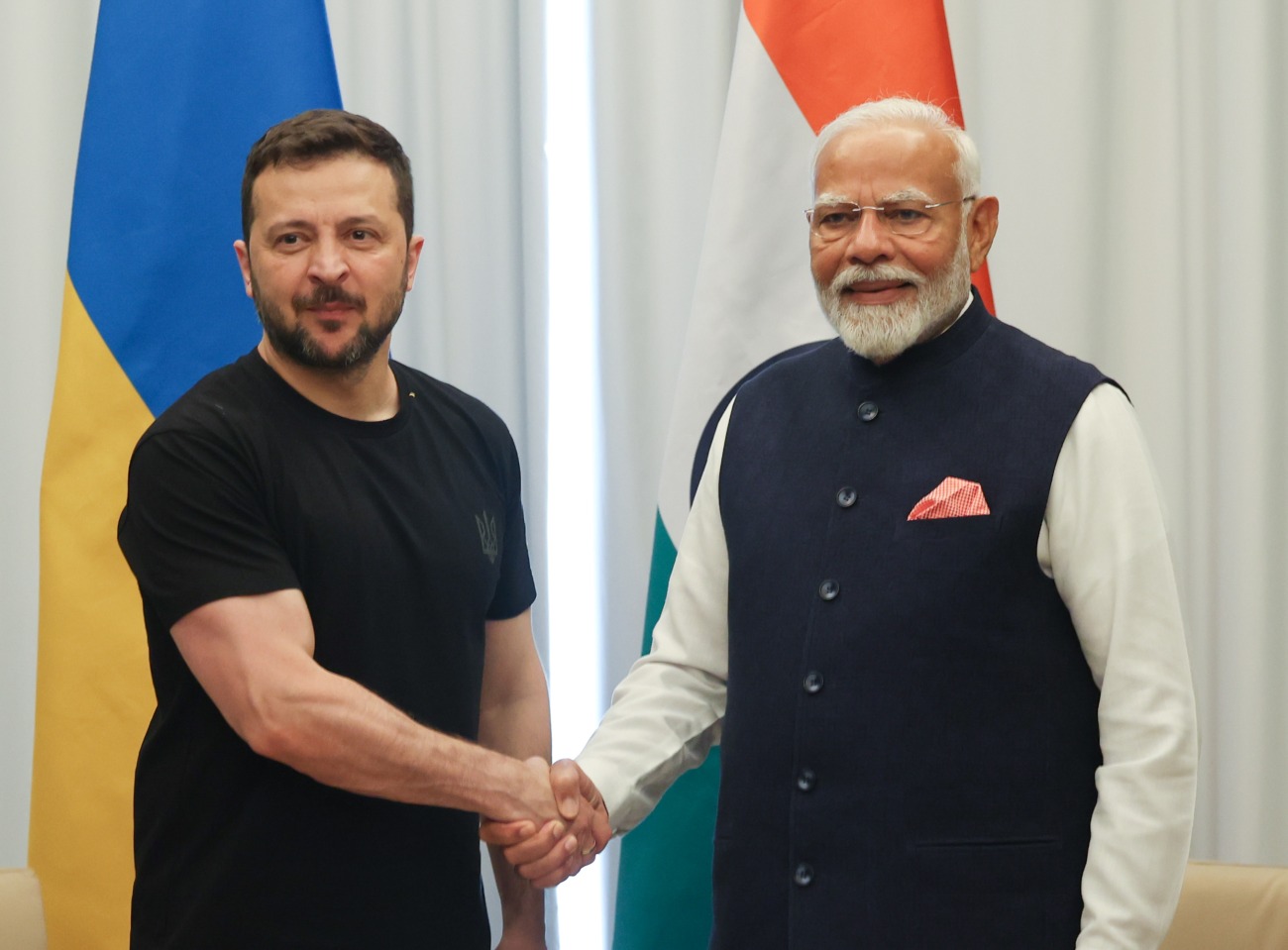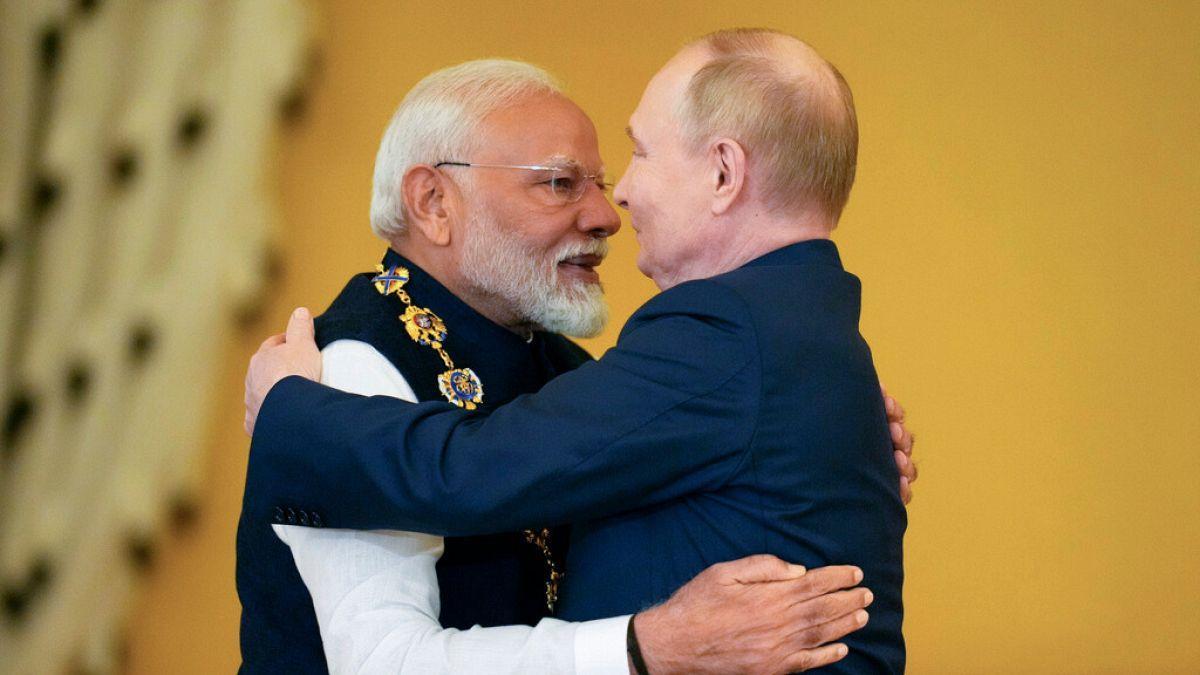Amid Indian PM Narendra Modi’s visit to Ukraine on 23rd August, the U.S. Embassy in Kyiv has issued a warning about the possibility of a Russian attack across the country as it prepares to commemorate Independence Day—the third celebration of its kind since the Russian invasion began in February 2022.
The US embassy in Kyiv warned that there was an increased risk of Russian missile and drone attacks throughout the nation.
“The U.S. Embassy in Kyiv assesses that during the next several days and through the weekend, there is an increased risk of both nighttime and daytime Russian drone and missile attacks throughout Ukraine in connection with Ukraine’s Independence Day on August 24,” it said in a statement published on August 21.
Ukrainian Independence Day is the commemoration of the day when the country voted to break away from the former Soviet Union. However, these annual celebrations have been beset with deadly Russian attacks since the Russians marched into Ukraine in 2022.
For instance, on the 31st Ukrainian Independence Day celebrated in 2022, Moscow launched a missile strike on an eastern Ukrainian train station, killing at least 22 people. Similarly, on the 32nd Ukrainian Independence Day celebrated in 2023, Russia launched a missile attack on the southern city of Dnipro that damaged at least a dozen civilian facilities. The celebrations have, thus, been somber.

Concerns of a large Russian attack have returned based on the experience of the last two years, as well as the intense fighting raging on both Russian and Ukrainian territory. However, if Russia launches a strike on August 24, it would just be a day after Indian Prime Minister Narendra Modi leaves Kyiv after a visit to the embattled country.
The Indian Prime Minister is due to visit Ukraine on August 23 after winding up a two-day visit to Poland. The visit, coinciding with Ukraine’s Day of the National Flag, comes more than a month after Modi was rebuked by Ukraine and the West for his high-stakes visit to Russia.
Moreover, the Indian Ministry of External Affairs has projected the visit as “historic” as it is the first by an Indian Prime Minister in 30 years since the two sides established diplomatic relations.
According to observers, the goal of the visit would be to rebalance ties and mitigate the fallout from Modi’s trip to Moscow last month, which took place at the same time as a deadly attack on a children’s hospital in Kyiv, earning him censure from Ukrainian President Volodymyr Zelenskyy.
India maintains an independent relationship with Russia and Ukraine and has reiterated that “this is not the era for wars.” Nonetheless, despite the meticulous efforts of the United States, New Delhi has declined to sever ties with Russia, its strategic partner. Rather, relations have deepened, leading to increased trade and defense collaboration between the two nations.

Surprisingly, the Kremlin has also refrained from commenting on Prime Minister Modi’s visit to Kyiv. This is in stark contrast to the Ukrainian President’s instant criticism of the Indian leader’s visit to Moscow. After the Indian leader was seen hugging Putin, he said that Modi’s meeting was “a huge disappointment” and “a devastating blow to peace efforts.”
If Russia carries out a lethal attack on Ukraine’s Independence Day, as it does annually, it will probably be after the Indian Prime Minister has left the country.
Ukraine’s Independence Day Amid Kursk Invasion
This year, Ukraine’s Independence Day festivities take place two weeks after Ukrainian forces initiated an unanticipated cross-border invasion into Russia’s Kursk region.
In response, Russian President Vladimir Putin has pledged that Moscow will respond to the intrusion, which he called a serious provocation, with a “worthy response”. Russia has downplayed the mini-invasion, dismissing it as an act of terrorism by Ukraine, assisted by NATO allies.
To slow the progress of the swiftly advancing Ukrainian troops, the Kremlin has deployed several units from their bases in the occupied southern regions of Ukraine to the front lines. Observers believe that the unexpected offensive caught Russia by surprise and ultimately brought the conflict into Russian territory.
While capturing territory, Ukraine has been pleading with its allies in the West to authorize the use of long-range weapons inside Russian territory—a demand that has not yet received approval due to concerns about an unprecedented escalation that might extend the conflict to NATO.
Putin continues to downplay the significance of the Ukrainian offensive in the Kursk oblast. Take a look at this video – he only mentions Kursk at the very end, after Belgorod and Bryansk regions, and does so dismissively, as if to say, «Oh, and there's also Kursk». Like it's… pic.twitter.com/4IhHSCMIqe
— Yigal Levin (@YigalLevin) August 22, 2024
Zelenskyy asserted that as the conflict extended deeper into Russia, the red lines — established by the Biden administration due to concerns about a nuclear exchange — had become irrelevant. Meanwhile, France, the UK, and the US have yet to demonstrate a willingness to alter their policies.
However, Ukraine has nevertheless managed to keep the Russian troops on edge. On August 21, as Ukrainian troops continued to advance in Russia’s Kursk region, conducting in-depth raids on frontline towns and villages, the country launched one of its largest drone attacks against Moscow.
Thus far, Zelenskyy’s unexpected attack has not prevented Russian forces from advancing farther into the eastern Donetsk oblast of Ukraine. The Russians seized control of two other villages, Komyshivka and Zhuravka, following the capture of the town of Niu-York earlier this week. In Zhuravka, Russian soldiers recorded a video of themselves in the yard of an abandoned house while flying a Russian flag. “Glory to Russia,” they shouted.
Following the capture of the Ukrainian city of Avdiivka in February, Russia has been gaining ground in the eastern Donbas region. Its tactics have proven highly effective. Warplanes drop precision-guided bombs on Ukrainian positions while troops advance in small units, conducting continuous sorties. The casualty count is significant.
Since launching its full-scale invasion of Ukraine in February 2022, Russia has struck Ukraine with 9,600 missiles and 14,000 drones, according to statements made earlier this week by Oleksandr Syrskyi, the top commander of Ukraine.
- Contact the author at nytten (at) gmail.com
- Follow EurAsian Times on Google News




